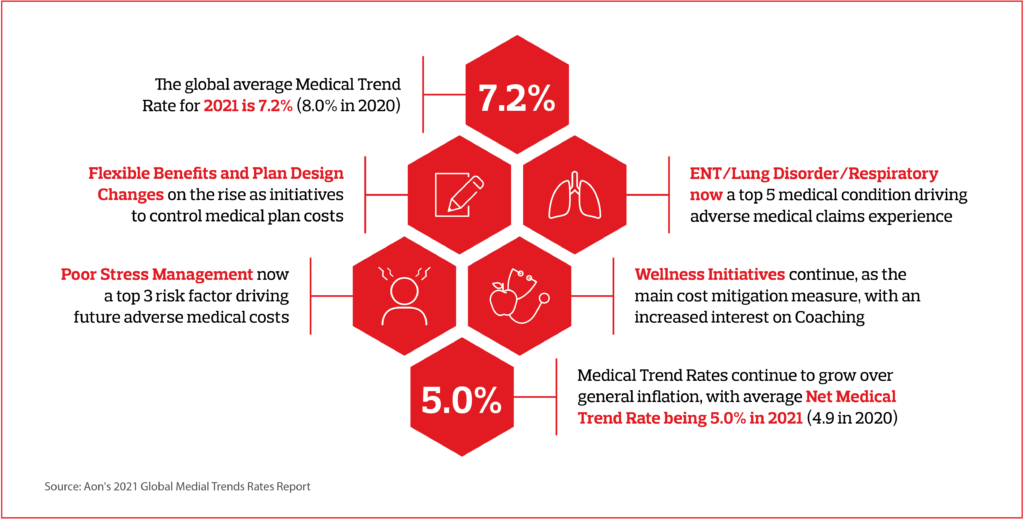December 16, 2020
The impact of the novel coronavirus (COVID-19) pandemic is starting to be felt in parts of the healthcare industry that are not dedicated to treating patients infected with the virus.
With the lowest rate recorded in its 13-year existence, Aon’s annual 2021 Global Medical Trend Rates Report found that the projected global medical trend rate — the percentage increase in companies’ medical plan costs — is expected to decrease, from 8 percent in 2020 to 7.2 percent for 2021. This is mostly because of the economic slowdown, with a global decrease in general inflation and with employees delaying or canceling in-person treatments and procedures because of COVID-19.
“There is still a significant amount of uncertainty regarding COVID-19’s impact on deferred treatments and long-term healthcare,” said Tim Nimmer, Aon’s global chief actuary for Health Solutions. “While countries navigate through different outbreak phases, the expectation is that medical plan utilization will return to normal levels during 2021 as medical services begin to reopen to the market.”
Another shift in the latest report results: “poor stress management” moved into a top-three spot of risk factors expected to drive medical costs globally, a list that points to a prevalence of unhealthy personal habits. Other top factors include high blood pressure, physical inactivity, high cholesterol and bad nutrition.
Here’s a look at cost and risk data globally and what companies are doing to mitigate an otherwise steady increase in medical plan costs.

The Path Forward for Employers
Efforts to control healthcare costs are not new. But — even though this year may mean a temporary drop in healthcare spending — the pandemic has given companies the opportunity to improve both the management and customization of their programs.
“COVID-19 has demonstrated the need for better global governance around the management of medical programs,” said Francois Choquette, executive vice president and leader of global benefits for Aon. “Multinational employers are still learning how to manage the pandemic and its effects and are using this experience to better understand and address employees’ healthcare and wellness needs.”
Employers can take the following steps to shape a healthier path forward for employees — and manage costs.
- Provide good-quality healthcare treatment when needed
- Facilitate the management of chronic health conditions
- Prevent and reduce the risk of accidents and illnesses
- Help employees understand their health risks and educate them on steps to improve their health
- Encourage healthy behaviors
“With poor stress management a top risk factor across the globe, employers should ensure wellness programs address all aspects of wellbeing — physical, mental, emotional, social and financial,” says Stephanie Pronk, senior vice president and leader of the Health Transformation team at Aon. “Creating the right environment and support for employees’ wellbeing will be a critical step in the path forward to building a resilient workforce.”
The post Poor Stress Management A Major Driver of 2021 Healthcare Costs appeared first on The One Brief.
